Evaluation of a Filtering Facepiece Respirator and a Pleated Particulate Respirator in Filtering Ultrafine Particles and Submicron Particles in Welding and Asphalt Plant Work Environments
Abstract
1. Introduction
2. Materials and Methods
- Two NanoScan SMPS 3910 machines, used to measure ultrafine particle concentration;
- Three sampling probes, used to maintain airflows;
- N95 respirators, used to determine their ultrafine particle filtration effectiveness;
- A foam manikin head to simulate human interaction with the environment;
- 85 L per minute air pump used to simulate human breathing effects;
- A portable stand and cart used to transport testing configuration to different locations.
- Industrial Manufacturing Plant located in South Georgia;
- Georgia Southern University welding shop;
- Asphalt Production Plant located in South Georgia.
3. Results
3.1. Engineering Manufacturing Site
3.1.1. Die Casting Facility
3.1.2. Direct Airflow from MIG Welding
3.1.3. Observer Position Stick Welding
3.2. Georgia Southern University’s Welding Shop
3.3. Asphalt Plant
- Pleated sealed;
- Non-pleated;
- Non-pleated sealed.
4. Discussion
5. Conclusions
Supplementary Materials
Author Contributions
Funding
Institutional Review Board Statement
Informed Consent Statement
Data Availability Statement
Acknowledgments
Conflicts of Interest
References
- Nanoparticles: Your Environment, Your Health | National Library of Medicine. U.S. National Library of Medicine, National Institutes of Health. Available online: https://www.toxtown.nlm.nih.gov/chemicals-and-contaminants/nanoparticles (accessed on 13 June 2021).
- Li, T.; Kheifets, S.; Medellin, D.; Raizen, M.G. Measurement of the Instantaneous Velocity of a Brownian Particle. Science 2010, 328, 1673–1675. [Google Scholar] [CrossRef]
- Kheifets, S.; Simha, A.; Melin, K.; Li, T.; Raizen, M.G. Observation of Brownian Motion in Liquids at Short Times: Instantaneous Velocity and Memory Loss. Science 2014, 343, 1493–1496. [Google Scholar] [CrossRef] [PubMed]
- Isaxon, C.; Pagels, J.; Gudmundsson, A.; Asbach, C.; John, A.C.; Kuhlbusch, T.A.J.; Karlsson, J.E.; Kammer, R.; Tinnerberg, H.; Nielsen, J.; et al. Characteristics of welding fume aerosol investigated in three Swedish workshops. J. Physics Conf. Ser. 2009, 151, 012059. [Google Scholar] [CrossRef]
- Brand, P.; Lenz, K.; Reisgen, U.; Kraus, T. Number Size Distribution of Fine and Ultrafine Fume Particles from Various Welding Processes. Ann. Occup. Hyg. 2012, 57, 305–313. [Google Scholar] [CrossRef]
- Schraufnagel, D.E. The health effects of ultrafine particles. Exp. Mol. Med. 2020, 52, 311–317. [Google Scholar] [CrossRef] [PubMed]
- Stölzel, M.; Breitner, S.; Cyrys, J.; Pitz, M.; Wölke, G.; Kreyling, W.; Heinrich, J.; Wichmann, H.-E.; Peters, A. Daily mortality and particulate matter in different size classes in Erfurt, Germany. J. Expo. Sci. Environ. Epidemiol. 2006, 17, 458–467. [Google Scholar] [CrossRef]
- Meng, X.; Ma, Y.; Chen, R.; Zhou, Z.; Chen, B.; Kan, H. Size-Fractionated Particle Number Concentrations and Daily Mortality in a Chinese City. Environ. Health Perspect. 2013, 121, 1174–1178. [Google Scholar] [CrossRef] [PubMed]
- Liu, L.; Breitner, S.; Schneider, A.; Cyrys, J.; Brüske, I.; Franck, U.; Schlink, U.; Leitte, A.M.; Herbarth, O.; Wiedensohler, A.; et al. Size-fractioned particulate air pollution and cardiovascular emergency room visits in Beijing, China. Environ. Res. 2013, 121, 52–63. [Google Scholar] [CrossRef] [PubMed]
- Cassee, F.R.; Muijser, H.; Duistermaat, E.; Freijer, J.J.; Geerse, K.B.; Marijnissen, J.C.; Arts, J.H. Particle size-dependent total mass deposition in lungs determines inhalation toxicity of cadmium chloride aerosols in rats. Application of a multiple path dosimetry model. Arch. Toxicol. 2002, 76, 277–286. [Google Scholar] [CrossRef] [PubMed]
- Donaldson, K.; Brown, D.M.; Clouter, A.; Duffin, R.; MacNee, W.; Renwick, L.; Tran, L.; Stone, V. The Pulmonary Toxicology of Ultrafine Particles. J. Aerosol Med. 2002, 15, 213–220. [Google Scholar] [CrossRef]
- Oberdorster, G. Significance of particle parameters in the evaluation of exposure-dose-response relationships of inhaled particles. Inhal. Toxicol. 1996, 8, 73–89. [Google Scholar] [CrossRef]
- Hoet, P.H.; Brüske-Hohlfeld, I.; Salata, O.V. Nanoparticles—Known and unknown health risks. J. Nanobiotechnol. 2004, 2, 12. [Google Scholar] [CrossRef]
- Oberdürster, G. Toxicology of ultrafine particles: In vivo studies. Philos. Trans. R. Soc. A Math. Phys. Eng. Sci. 2000, 358, 2719–2740. [Google Scholar] [CrossRef]
- Ready Mix Concrete. Available online: http://www.civileblog.com/readymix-concrete/#Advantages (accessed on 1 March 2016).
- National Ready Mixed Concrete Association. Occupational Exposure to Respirable Crystalline Silica; NIOSH: Silver Spring, MD, USA, 2014. [Google Scholar]
- Occupational Safety and Health Administration 3211. Workers Safety Series: Concrete Manufacturing. 2004. Available online: https://www.osha.gov/sic-manual/3211 (accessed on 13 June 2021).
- European Commission. European Ready Mixed Concrete Organization. Guidance on Health and Safety Management in the European Ready Mixed Concrete Industry; EU Commission: Brussels, Belgium, 2006. [Google Scholar]
- US Department of Labor, National Institute for Occupational Safety and Health, A Guide to working safely with silica. Available online: https://www.cdc.gov/niosh/pdfs/silicax.pdf (accessed on 19 May 2021).
- OSHA. Available online: https://www.osha.gov/Publications/concrete_manufacturing.html (accessed on 25 February 2020).
- National Ready Mixed Concrete Association. 2014 National Ready Mixed Concrete Association Excellence in Safety Awards; Office of Safety: Washington, DC, USA, 2014. [Google Scholar]
- American Concrete Pumping Association. Safety Manual for Ready Mixed Concrete Truck Drivers: Delivering to Concrete Pumps and Crane Lift Buckets; American Concrete Pumping Association: Lewis Center, OH, USA, 2005. [Google Scholar]
- Nova Scotia Construction Safety Association. The Concrete Facts, a Safety Newsletter for the Ready-Mix Concrete Industry; Nova Scotia Construction Safety Association: Dartmouth, NS, Canada, 2013. [Google Scholar]
- Cho, H.-W.; Yoon, C.-S.; Lee, J.-H.; Viner, A.; Johnson, E.W. Comparison of Pressure Drop and Filtration Efficiency of Particulate Respirators using Welding Fumes and Sodium Chloride. Ann. Occup. Hyg. 2011, 55, 666–680. [Google Scholar] [CrossRef]
- Cho, H.-W.; Yoon, C.-S. Workplace field testing of the pressure drop of particulate respirators using welding fumes. Ann. Occup. Hyg. 2012, 56, 948–958. [Google Scholar] [CrossRef][Green Version]
- Rengasamy, S.; Eimer, B.C. Nanoparticle Penetration through Filter Media and Leakage through Face Seal Interface of N95 Filtering Facepiece Respirators. Ann. Occup. Hyg. 2012, 56, 568–580. [Google Scholar] [CrossRef] [PubMed]
- Ntlailane, M.G.L.; Wichmann, J. Effectiveness of N95 respirators for nanoparticle exposure control (2000–2016): A systematic review and meta-analysis. J. Nanoparticle Res. 2019, 21, 1–15. [Google Scholar] [CrossRef]
- Burstyn, I.; Kromhout, H.; Cruise, P.J.; Brennan, P. Designing an international industrial hygiene database of exposures among workers in the asphalt industry. Ann. Occup. Hyg. 2000, 44, 57–66. [Google Scholar] [CrossRef]
- Adhikari, A.; Mitra, A.; Rashidi, A.; Ekpo, I.; Schwartz, J.; Doehling, J. Field Evaluation of N95 Filtering Facepiece Respirators on Construction Jobsites for Protection against Airborne Ultrafine Particles. Int. J. Environ. Res. Public Health 2018, 15, 1958. [Google Scholar] [CrossRef] [PubMed]
- Rengasamy, S.; Miller, A.; Eimer, B.C. Evaluation of the Filtration Performance of NIOSH-Approved N95 Filtering Facepiece Respirators by Photometric and Number-Based Test Methods. J. Occup. Environ. Hyg. 2011, 8, 23–30. [Google Scholar] [CrossRef]
- Tcharkhtchi, A.; Abbasnezhad, N.; Seydani, M.Z.; Zirak, N.; Farzaneh, S.; Shirinbayan, M. An overview of filtration efficiency through the masks: Mechanisms of the aerosols penetration. Bioact. Mater. 2021, 6, 106–122. [Google Scholar] [CrossRef] [PubMed]
- Anand, S.C.; Kennedy, J.F.; Miraftab, M.; Rajendran, S. (Eds.) Medical and Healthcare Textiles; Elsevier: Amsterdam, The Netherlands, 2010. [Google Scholar]
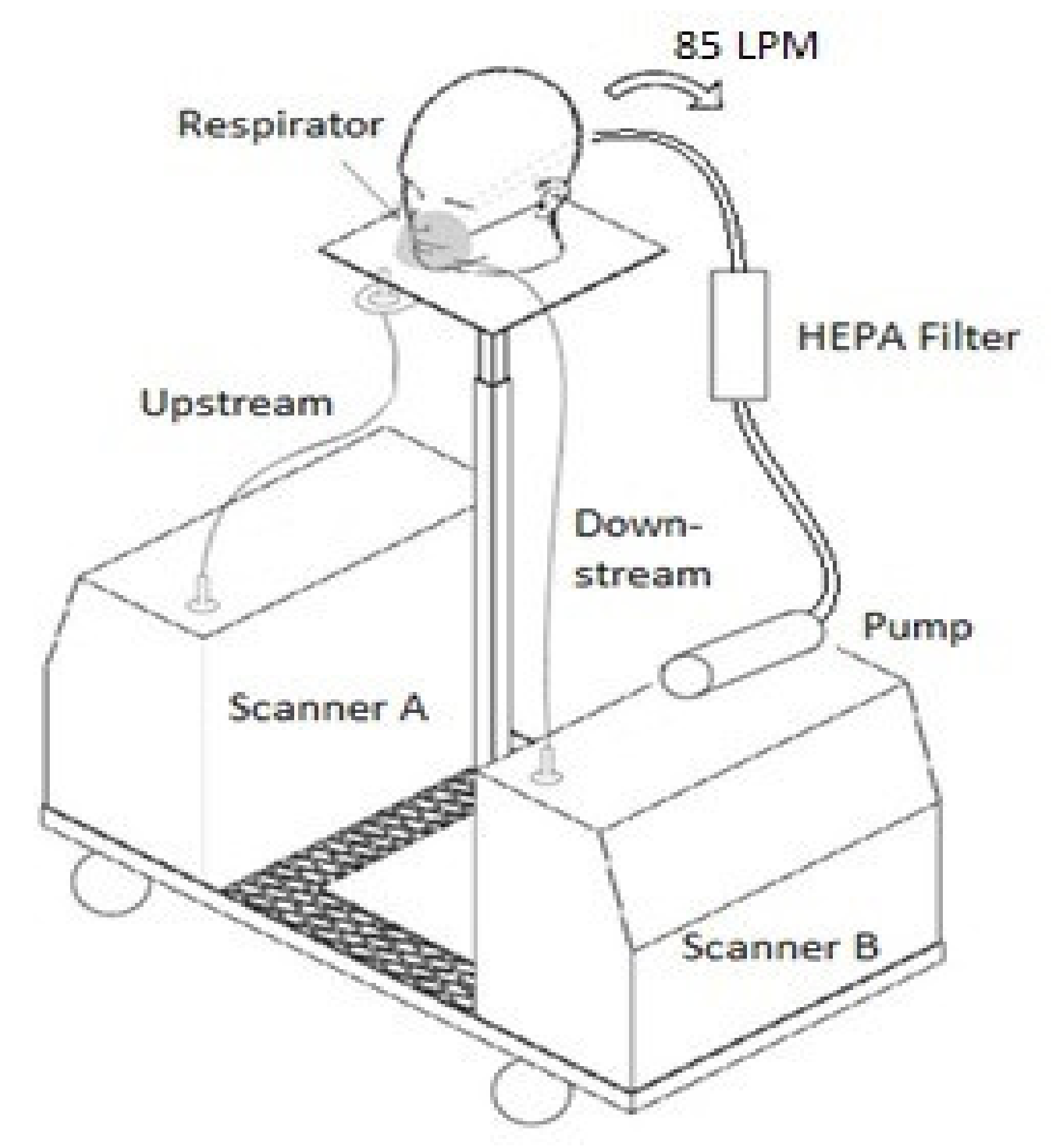
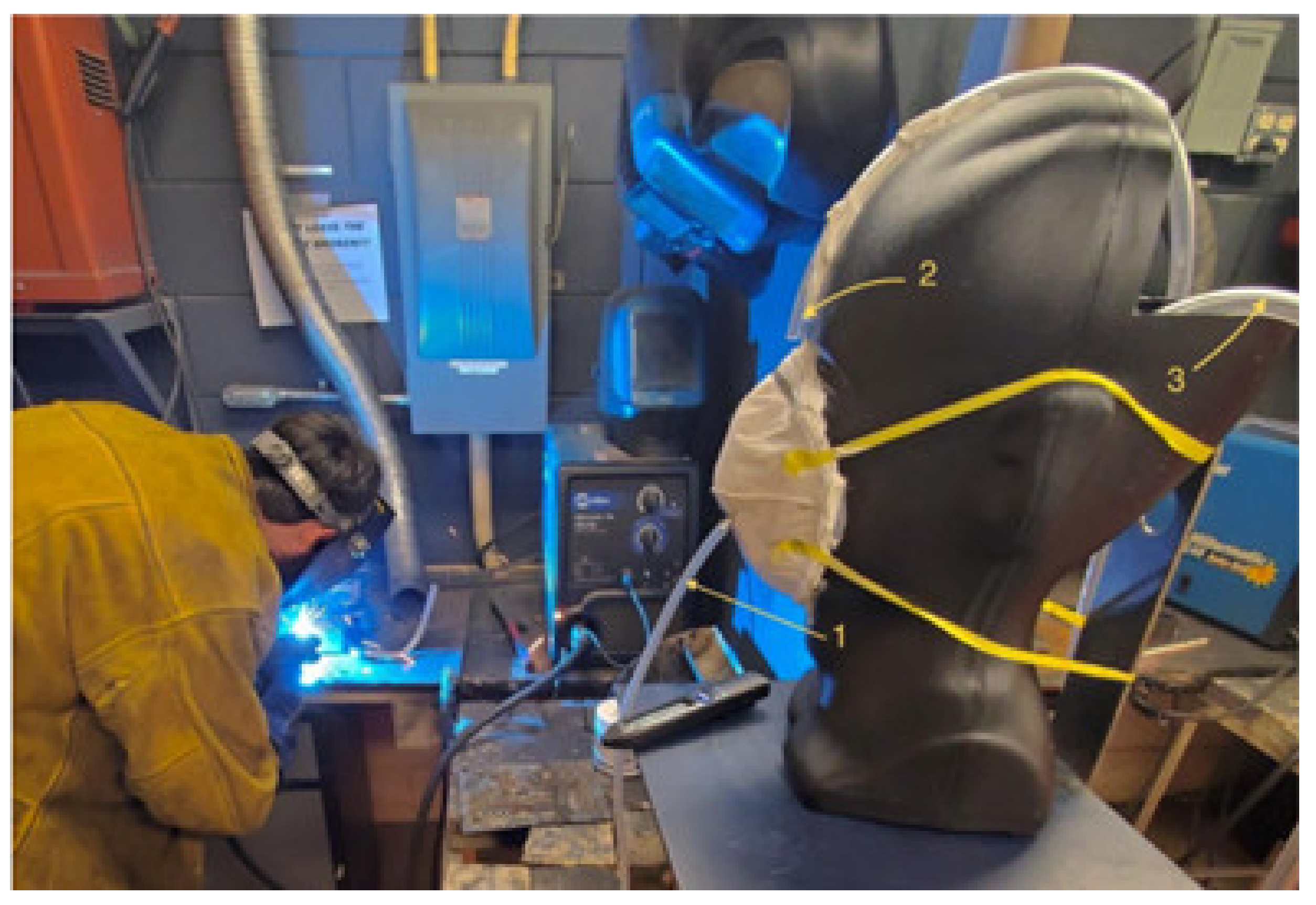
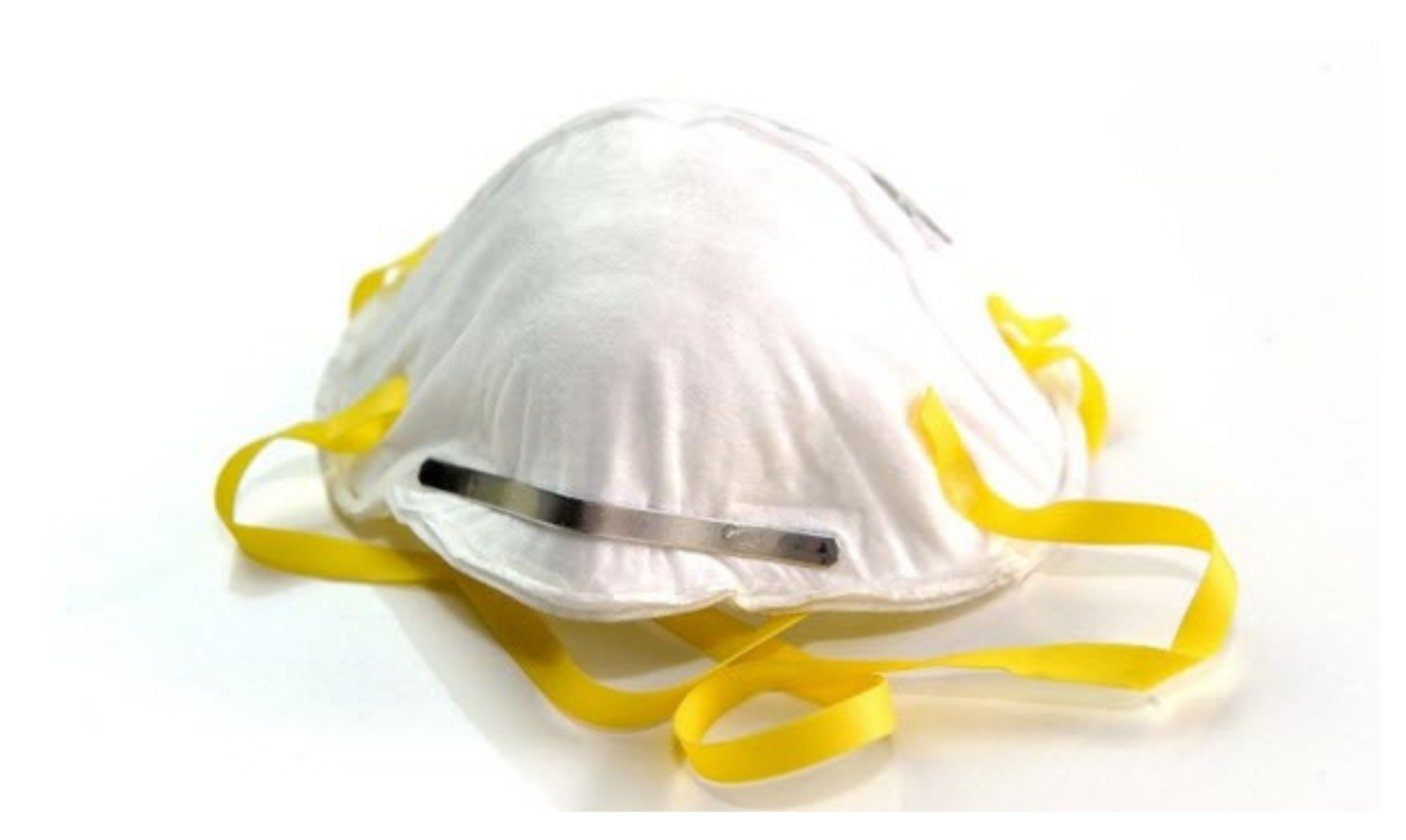
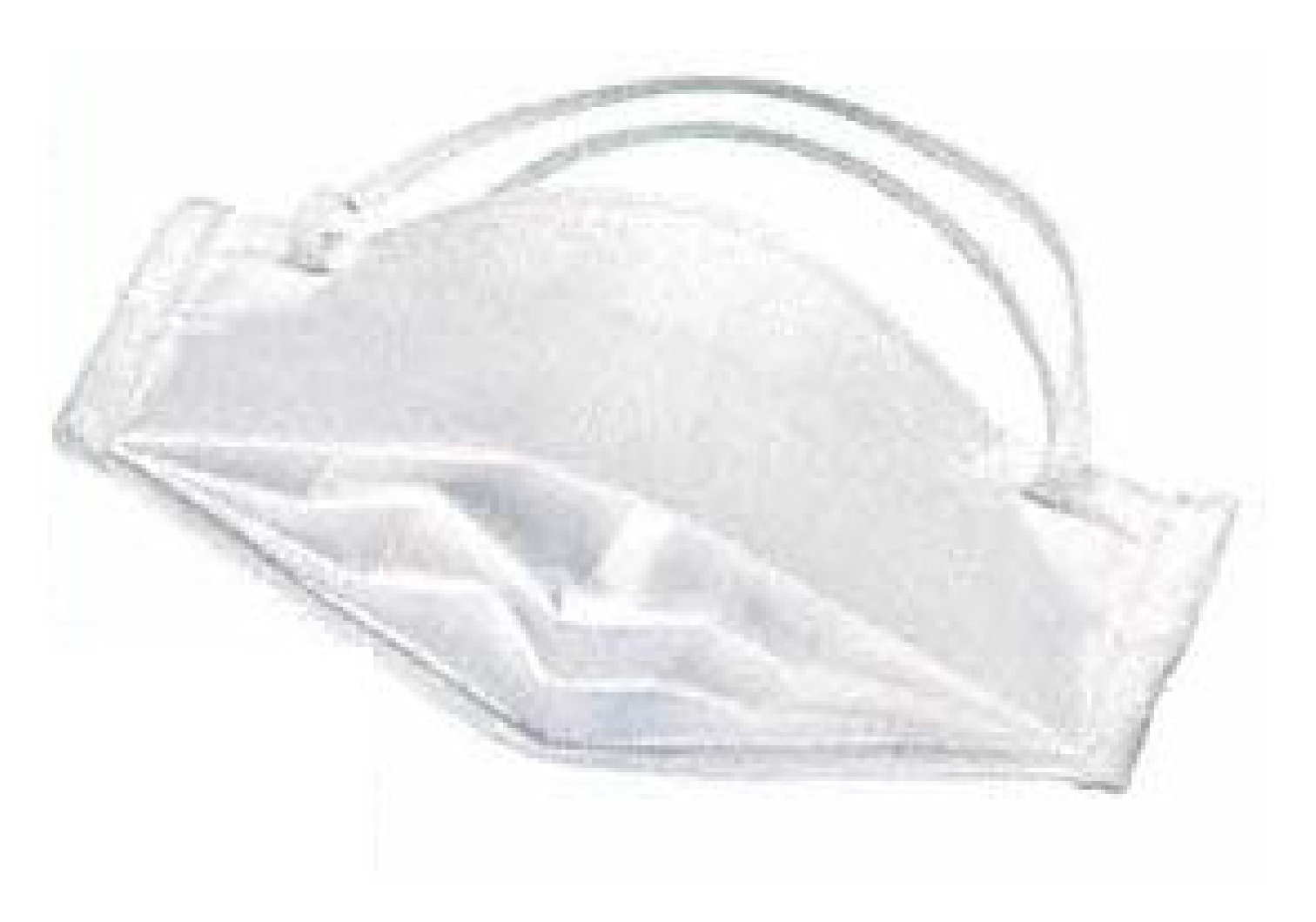
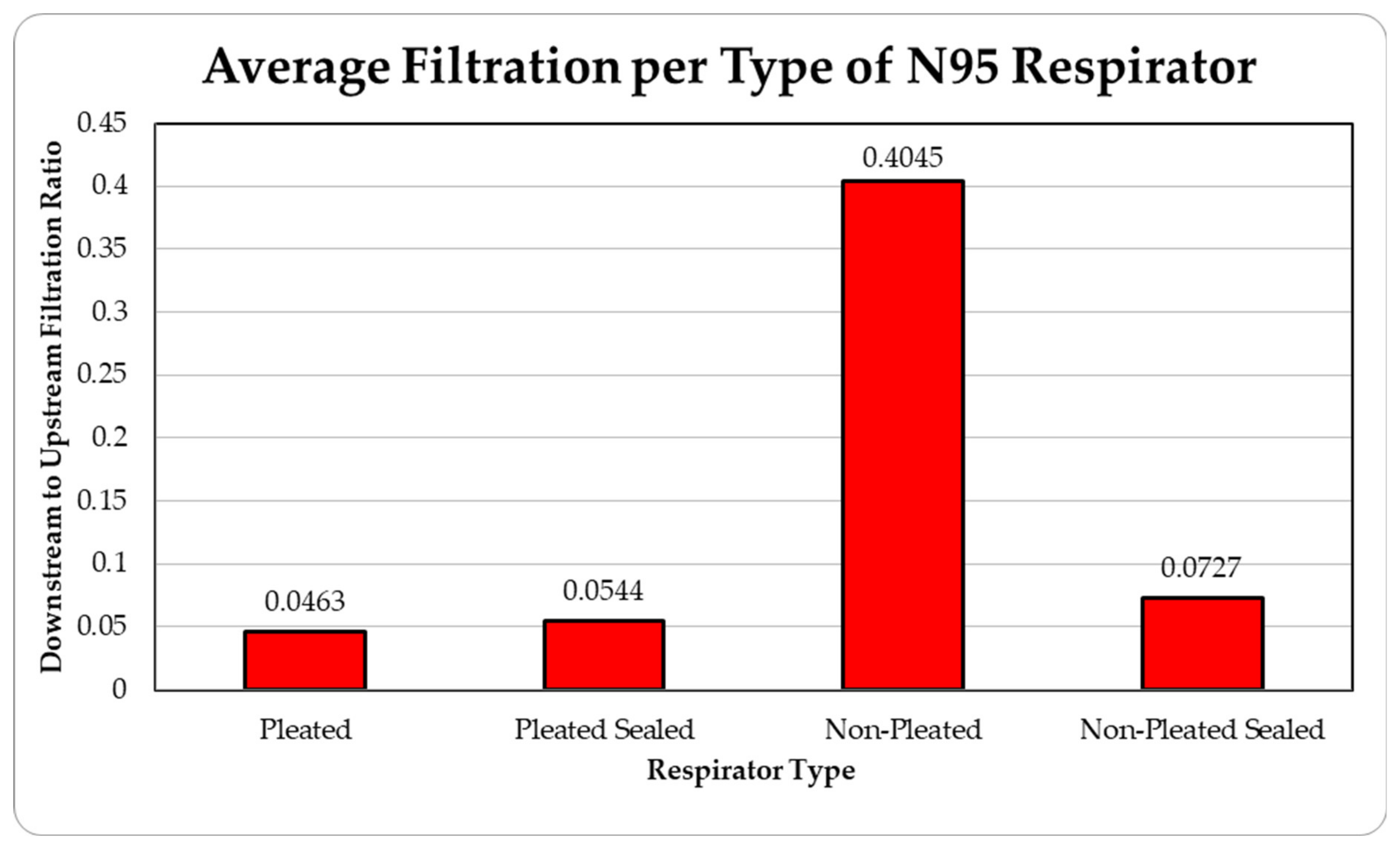

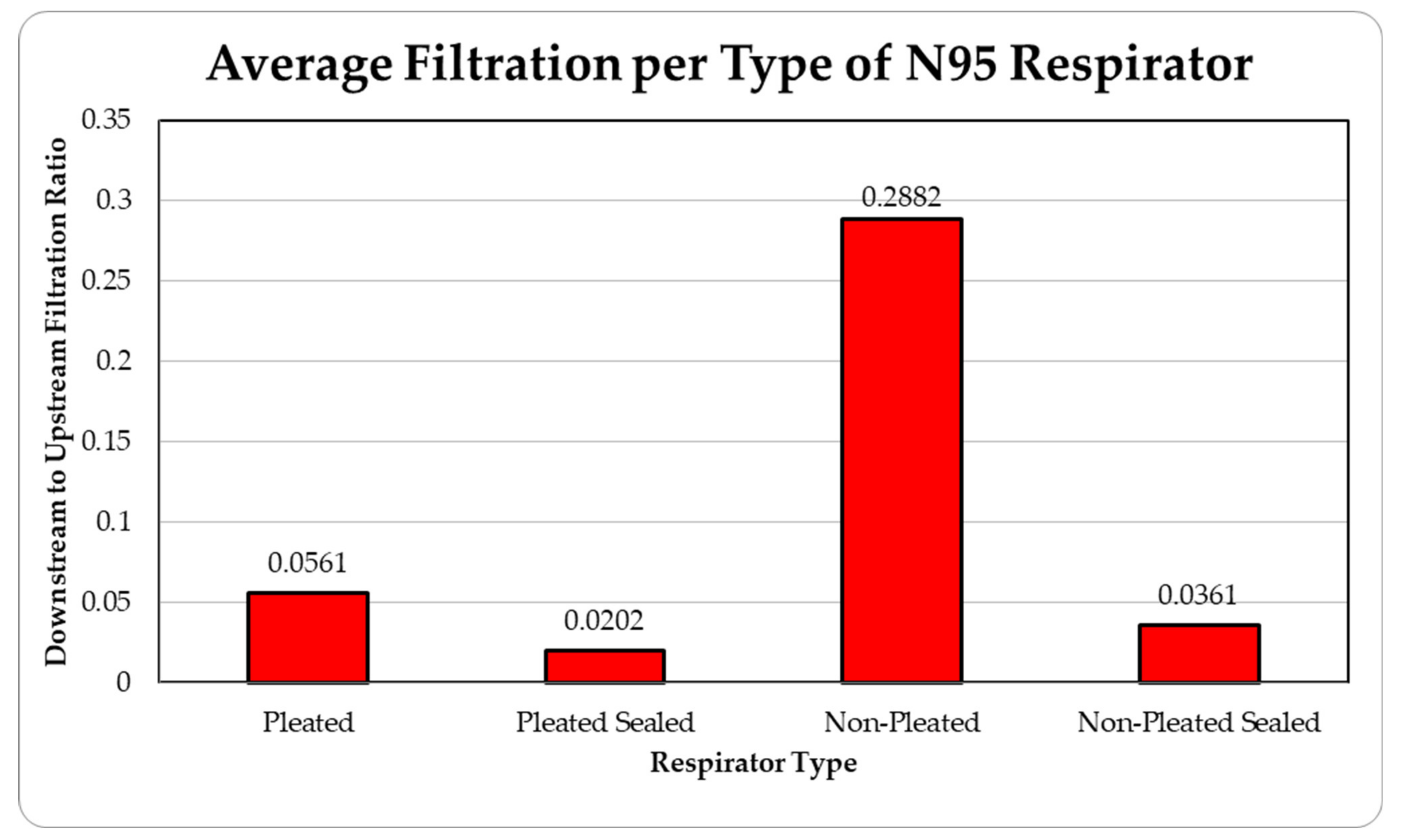
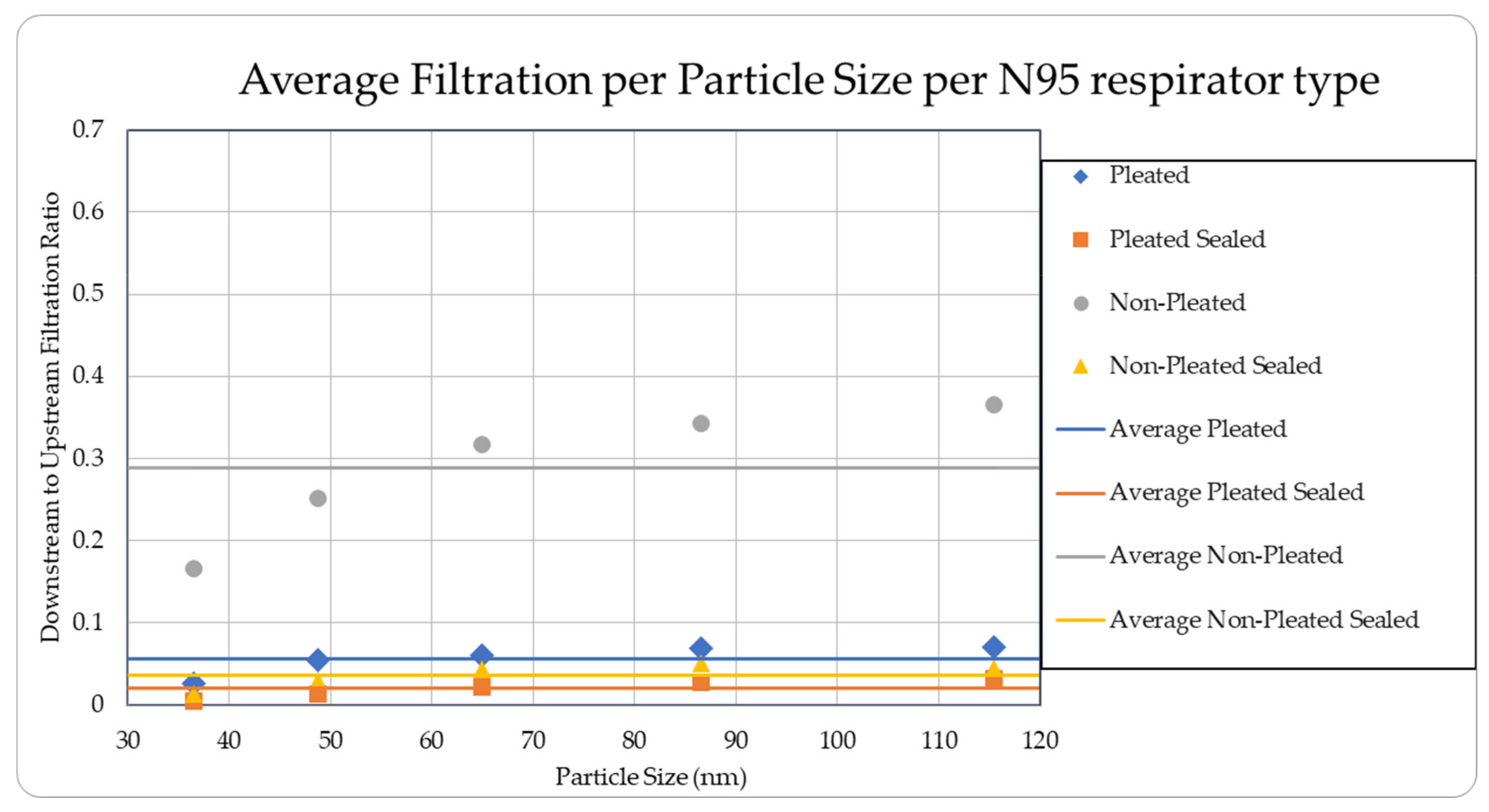

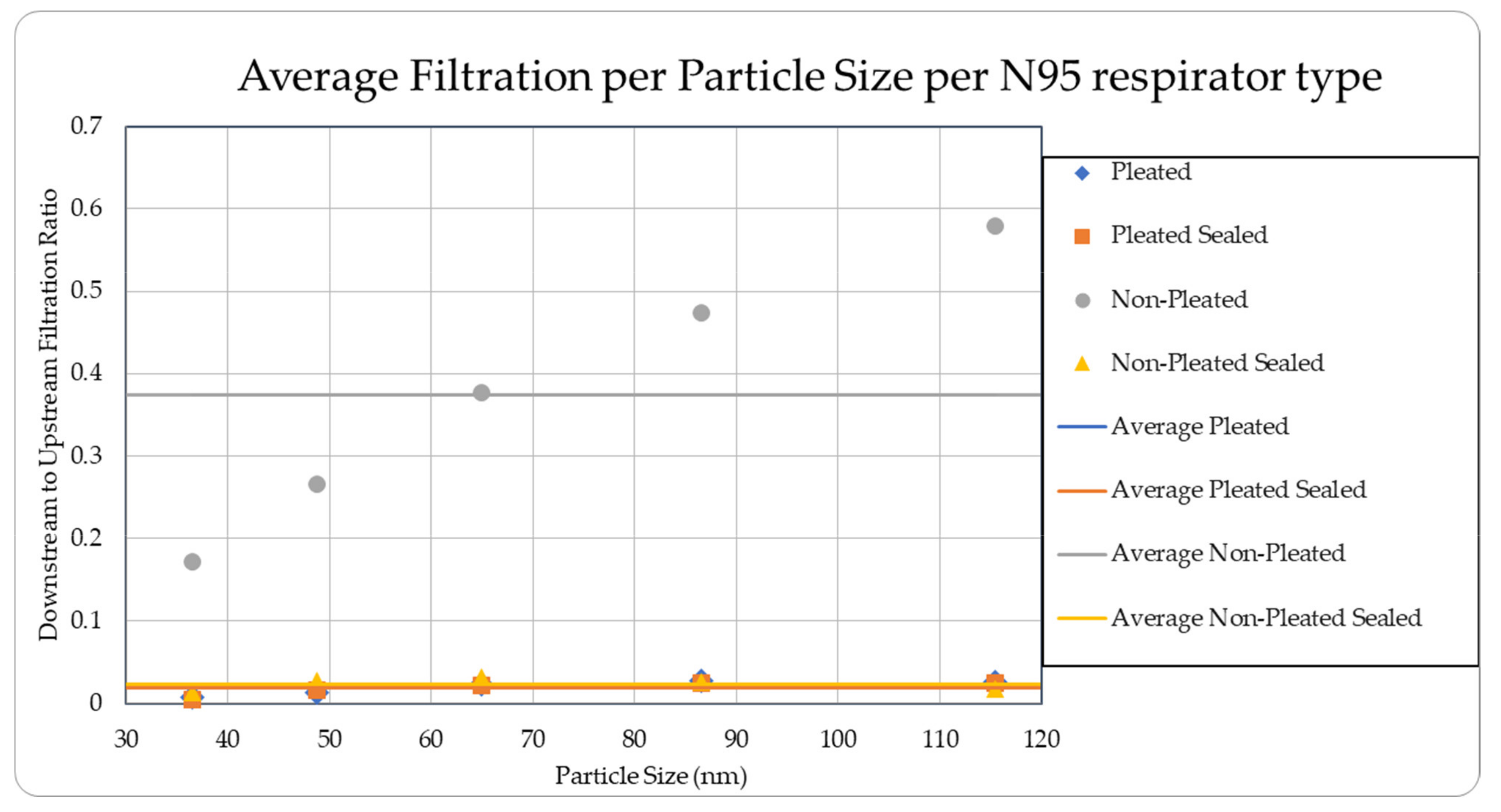
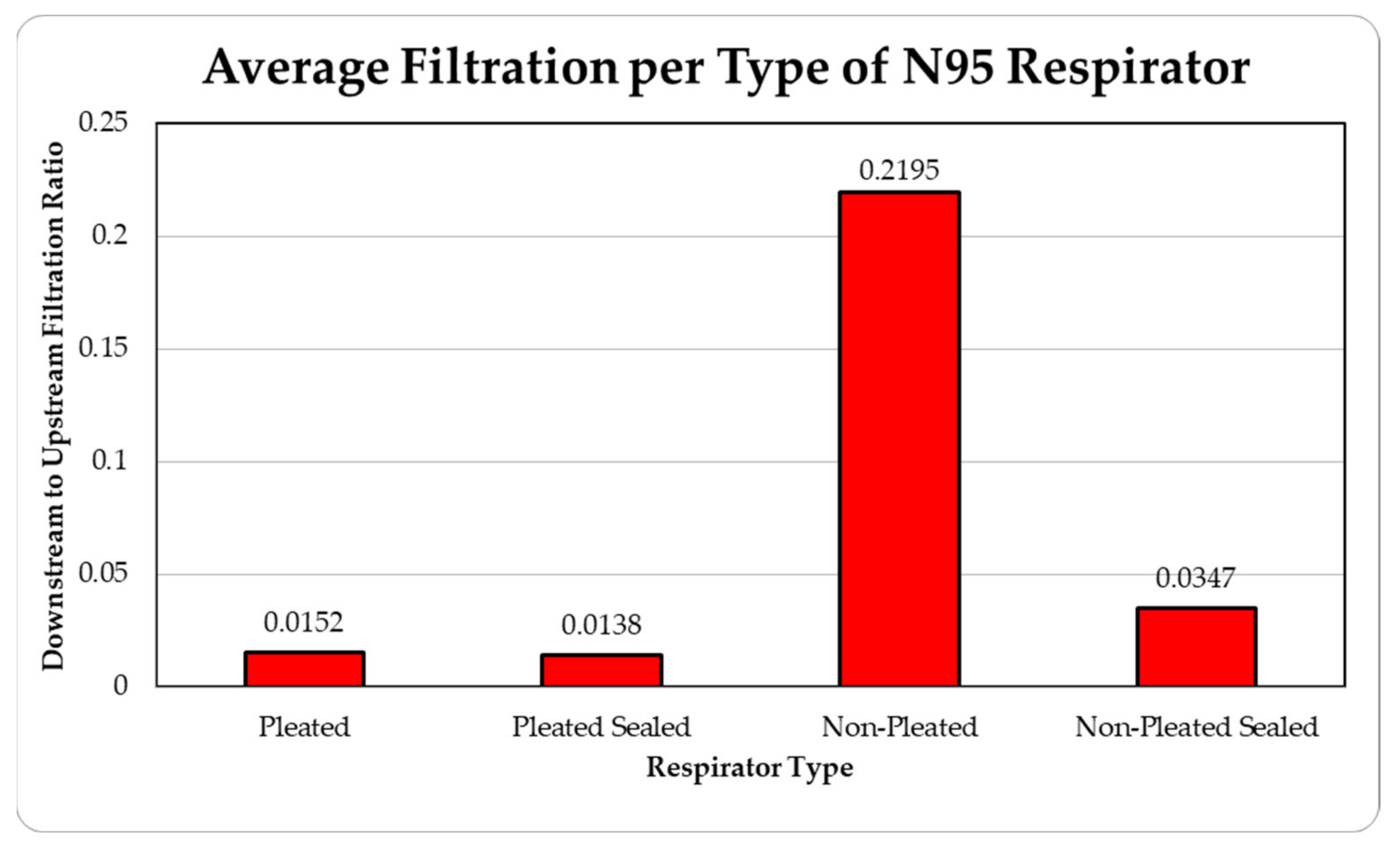
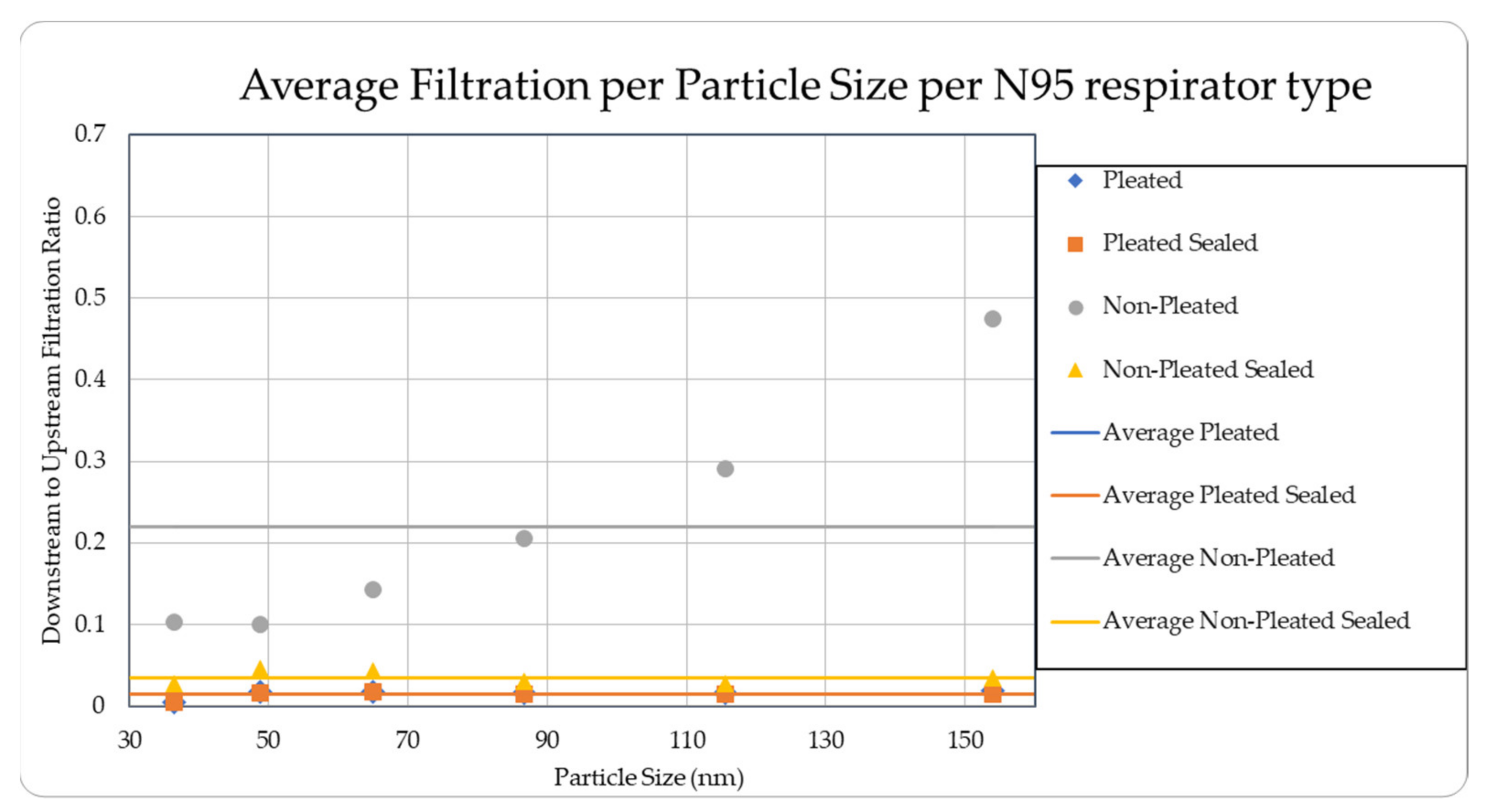
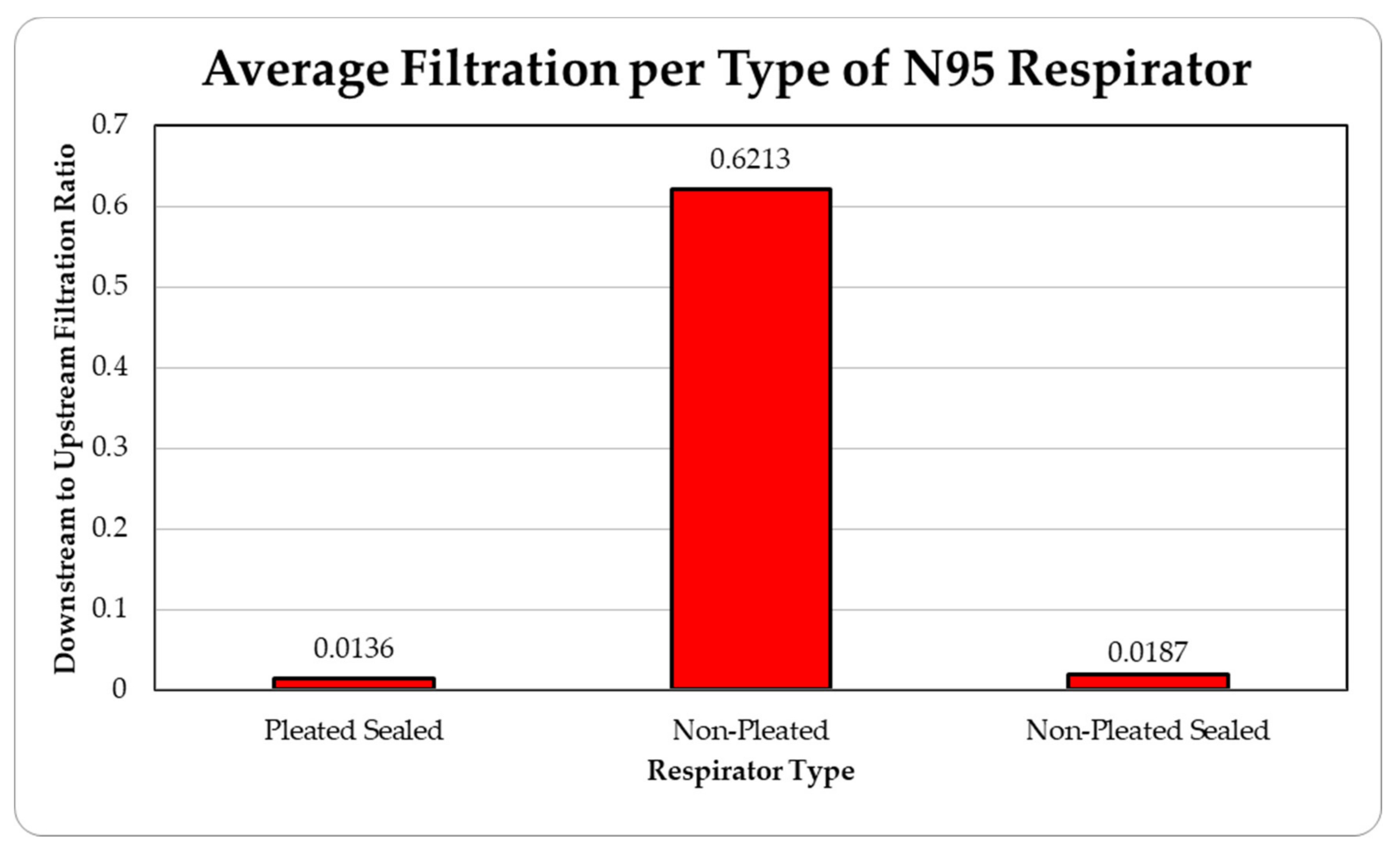

| Respirator Type | Particle Median Size (nm) | Overall Total Particles | Standard Deviation | ||||
|---|---|---|---|---|---|---|---|
| 36.5 | 48.7 | 64.9 | 86.6 | 115.5 | |||
| Pleated | 0.01383 | 0.03488 | 0.05182 | 0.06178 | 0.06942 | 0.04634 | 0.01282 |
| Pleated Sealed | 0.01639 | 0.04259 | 0.06242 | 0.07268 | 0.07796 | 0.05441 | 0.00686 |
| Non-Pleated | 0.21791 | 0.31613 | 0.42270 | 0.54403 | 0.81995 | 0.40452 | 0.09403 |
| Non-Pleated Sealed | 0.04107 | 0.07030 | 0.09478 | 0.10821 | 0.11280 | 0.07272 | 0.00930 |
| Ambient Condition (#count/cc) | 51,415 | 57,761 | 52,272 | 38,490 | 19,834 | 219,774 | 16,202 |
| Respirator Type | Particle Median Size (nm) | Overall Total Particles | Standard Deviation | ||||
|---|---|---|---|---|---|---|---|
| 36.5 | 48.7 | 64.9 | 86.6 | 115.5 | |||
| Pleated | 0.02603 | 0.05422 | 0.06104 | 0.06931 | 0.07005 | 0.05613 | 0.01825 |
| Pleated Sealed | 0.00457 | 0.01375 | 0.02266 | 0.02823 | 0.03166 | 0.02017 | 0.00831 |
| Non-Pleated | 0.16569 | 0.25111 | 0.31648 | 0.34219 | 0.36562 | 0.28822 | 0.07799 |
| Non-Pleated Sealed | 0.01337 | 0.02863 | 0.04320 | 0.05019 | 0.04486 | 0.03605 | 0.00589 |
| Ambient Condition (#count/cc) | 18,879 | 19,097 | 17,021 | 13,631 | 8680 | 77,309 | 4906 |
| Respirator Type | Particle Median Size (nm) | Overall Total Particles | Standard Deviation | ||||
|---|---|---|---|---|---|---|---|
| 36.5 | 48.7 | 64.9 | 86.6 | 115.5 | |||
| Pleated | 0.00759 | 0.01392 | 0.02319 | 0.02730 | 0.02595 | 0.01959 | 0.00862 |
| Pleated Sealed | 0.00530 | 0.01577 | 0.02264 | 0.02264 | 0.02517 | 0.01881 | 0.00534 |
| Non-Pleated | 0.17206 | 0.26575 | 0.37700 | 0.47382 | 0.57932 | 0.37359 | 0.05245 |
| Non-Pleated Sealed | 0.01347 | 0.02819 | 0.03241 | 0.02701 | 0.01823 | 0.02386 | 0.00251 |
| Ambient Condition (#count/cc) | 16,068 | 18,441 | 20,243 | 20,949 | 17,860 | 93,564 | 8399 |
| Respirator Type | Particle Median Size (nm) | Overall Total Particles | Standard Deviation | |||||
|---|---|---|---|---|---|---|---|---|
| 36.5 | 48.7 | 64.9 | 86.6 | 115.5 | 154 | |||
| Pleated | 0.00515 | 0.01777 | 0.01734 | 0.01627 | 0.01612 | 0.01862 | 0.02079 | 0.00697 |
| Pleated Sealed | 0.00484 | 0.01640 | 0.01757 | 0.01521 | 0.01426 | 0.01463 | 0.01521 | 0.00473 |
| Non-Pleated | 0.10275 | 0.10021 | 0.14261 | 0.20520 | 0.29152 | 0.47497 | 0.21954 | 0.06592 |
| Non-Pleated Sealed | 0.02801 | 0.04601 | 0.04261 | 0.03042 | 0.02752 | 0.03388 | 0.01382 | 0.01147 |
| Ambient Condition (#count/cc) | 5280 | 9811 | 17,985 | 25,988 | 25,861 | 16,080 | 101,007 | 15,259 |
| Respirator Type | Particle Median Size (nm) | Overall Total Particles | Standard Deviation | ||||||
|---|---|---|---|---|---|---|---|---|---|
| 20.5 | 27.4 | 36.5 | 48.7 | 64.9 | 86.6 | 115.5 | |||
| Pleated Sealed | 0.01628 | 0.03852 | 0.00926 | 0.00915 | 0.00865 | 0.00681 | 0.00675 | 0.01363 | 0.01340 |
| Non-Pleated | 0.58545 | * | 0.56447 | 0.36353 | 0.36664 | 0.54000 | 0.67301 | 0.53063 | 0.42606 |
| Non-Pleated Sealed | 0.01546 | 0.06560 | 0.01822 | 0.00863 | 0.00730 | 0.00762 | 0.00787 | 0.01867 | 0.01563 |
| Ambient Condition (#count/cc) | 436 | 484 | 328 | 385 | 759 | 1225 | 1390 | 5010 | 1043 |
Publisher’s Note: MDPI stays neutral with regard to jurisdictional claims in published maps and institutional affiliations. |
© 2021 by the authors. Licensee MDPI, Basel, Switzerland. This article is an open access article distributed under the terms and conditions of the Creative Commons Attribution (CC BY) license (https://creativecommons.org/licenses/by/4.0/).
Share and Cite
Mitra, A.; Adhikari, A.; Martin, C.; Dardano, G.; Wagemaker, P.; Adeoye, C. Evaluation of a Filtering Facepiece Respirator and a Pleated Particulate Respirator in Filtering Ultrafine Particles and Submicron Particles in Welding and Asphalt Plant Work Environments. Int. J. Environ. Res. Public Health 2021, 18, 6437. https://doi.org/10.3390/ijerph18126437
Mitra A, Adhikari A, Martin C, Dardano G, Wagemaker P, Adeoye C. Evaluation of a Filtering Facepiece Respirator and a Pleated Particulate Respirator in Filtering Ultrafine Particles and Submicron Particles in Welding and Asphalt Plant Work Environments. International Journal of Environmental Research and Public Health. 2021; 18(12):6437. https://doi.org/10.3390/ijerph18126437
Chicago/Turabian StyleMitra, Aniruddha, Atin Adhikari, Clinton Martin, Gracia Dardano, Pascal Wagemaker, and Caleb Adeoye. 2021. "Evaluation of a Filtering Facepiece Respirator and a Pleated Particulate Respirator in Filtering Ultrafine Particles and Submicron Particles in Welding and Asphalt Plant Work Environments" International Journal of Environmental Research and Public Health 18, no. 12: 6437. https://doi.org/10.3390/ijerph18126437
APA StyleMitra, A., Adhikari, A., Martin, C., Dardano, G., Wagemaker, P., & Adeoye, C. (2021). Evaluation of a Filtering Facepiece Respirator and a Pleated Particulate Respirator in Filtering Ultrafine Particles and Submicron Particles in Welding and Asphalt Plant Work Environments. International Journal of Environmental Research and Public Health, 18(12), 6437. https://doi.org/10.3390/ijerph18126437






